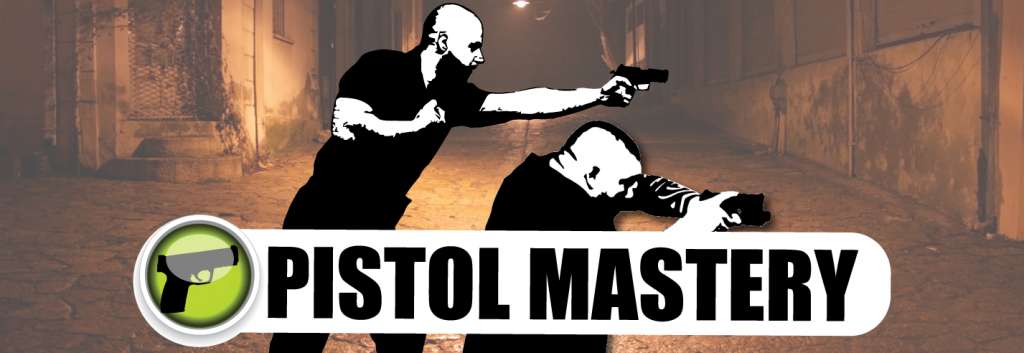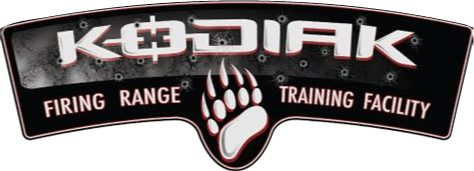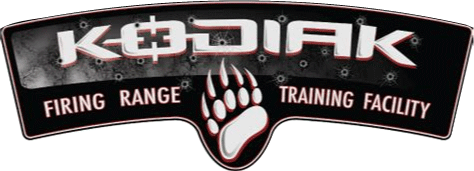
Sign Up!
Contact John E. Pemberton at john@dynamicspartan.com
Our 2-hour Pistol Mastery sessions are designed to take you beyond the basics of personal defense. While a large percentage of gunfights happen within 15 to 20 feet. We don’t get to choose how or when we are assaulted. These courses will teach students how to deal with a variety of self defense situations utilizing a handgun.
Topics Include,
- Entangled Shooting
- Compressed Marksmanship
- Distance Management
- Mobile Shooting Platform
- Threat Triage
- Failure to Stop
- Precision Pistol
- Cover & Concealment
- Malfunctions & Reloads
- One-Handed Shooting
- Intro to Low Light
- Compromised Positions
Prerequisite:
- Functional Pistol Combatives (or instructor approval)
Cost:
Equipment Needed:
- Must be 18* or older (Conditions apply for students under 21. Call 574.299.8000 or email johnpemberton@kodiakrange.com for details).
- Pistol
- Semi-Automatic or Revolver
- Rentals available for $15
- 50rds of Ammunition
- *Must use our ammunition in rental guns
- One Good Quality Strong Side Outside the Waistband (OWB) Holster or strong side concealed carry holster (IWB) ~ Holster must allow 1 hand reholstering, no cross-draw or shoulder rigs
- 3 Double Stacked Magazine (6 for Single Stacked Magazines) or 6 Speed Loaders (Limited Loaners available)
- Ear and Eye Protection (Loaners Available)
- Cover Garment to Conceal Pistol and Holster
Entangled Shooting:
Many self-defense events don’t begin as gun fights. In many cases, the gun is presented in the middle of a grapple or clinch when the bad guy already has hands on you. In this class, we discuss simple yet effective methods to control our opponent while accessing our self-defense tools. Shooting from this compressed position, with no eyes on the gun at all, can be a life-saving technique that is far too seldom thought about, discussed, or practiced.
Course Outline
- Universal Firearm Safety Rules
- Frames (to control the entangled fight)
- One-Handed Concealed Draw Stroke
- Shooting from the “2” position (compressed one-handed)
- Dis-entangling Safely and Effectively
Compressed Marksmanship:
Most civilian gun fights happen at “bad breath” distance – far closer than most people practice at the range. At this distance the gun can easily be grabbed or pushed away. We go into detail about how to utilize a compressed shooting position that incorporates multiple indexes to align our body and weapon to the threat for effective marksmanship without the traditional sighting systems.
Course Outline
- Universal Firearm Safety Rules
- Compressed Concealed Draw Stroke
- Shooting from the “3” position (compressed ready)
- Developing accuracy through consistent index points
- Effective Recoil Management with the Fist-Fire system
Distance Management:
Gun fights are rarely static – people are moving as the situation changes dynamically and rapidly. In this class we focus on recognizing the different shooting positions in our draw stroke, learning when to employ them, and reacting both to our own movement and the movement of our target.
Course Outline
- Universal Firearm Safety Rules
- Shooting from the “2” position (compressed one-handed)
- Shooting from the “3” position (compressed ready)
- Shooting from the “4” position (half to full-extension)
- Transitioning from 2-3-4 as the situation demands
- Entangling and dis-entangling techniques
Mobile Shooting Platform:
Static, stationary targets are easy to hit – so don’t be one! Mobility is key to any violent encounter but accuracy can be diminished if we are not moving effectively. Students will learn rapid movement and planting to engage a target. In addition, students will learn the Combat Glide to engage targets while they are on the move.
Course Outline
- Universal Firearm Safety Rules
- Concealed Draw Stroke while moving
- Flow Drills (ready/carry positions)
- Effective “planting” technique for rapid movement and engagements
- Combat Glide technique for creating stable mobility
Threat Triage:
Gun fights in the real world don’t often happen against one stationary, obvious target directly in front of you. In this class we discuss target prioritization, movement, and orientation on both known threats and unknowns in a changing environment. Students will learn how to engage and transition between multiple targets, beginning with the most immediate danger.
Course Outline
- Universal Firearm Safety Rules
- Concealed Draw Stroke while moving
- Flow Drills (ready/carry positions)
- Pivoting to orientate on a threat to the left, right, or behind
- Engaging multiple targets
- Rapidly recognizing immediate versus secondary threats.
Failure to Stop:
Five out of seven people that get shot live – which means they may continue to fight even after getting hit. Seldom does a single shot from a handgun stop the threat. In this class, we learn to recognize when a tactic has failed and rapidly switch to a backup plan. Learn why “two in the chest, one in the head” is a poor strategy and train to prevail!
Course Outline
- Universal Firearm Safety Rules
- Concealed Draw Stroke while moving
- Flow Drills (ready/carry positions)
- Rapid assessment
- Shot Placement and ideal target zones
- Angles of Fire
Precision Pistol:
Long distance self-defense with a pistol (often considered 50’ or further) is much less frequent than close range (>20’). However, the principles of fundamental marksmanship and physical skills required for accuracy are all the same. Being able to effectively put a round on target at 50’ means that you are able to do it quicker and more consistently at close ranges.
Course Outline
- Universal Firearm Safety Rules
- Consistent acquisition of the pistol from a table/nightstand/dresser
- Detail on effective Master Grip
- Sight Alignment/Sight Picture
- Trigger Manipulation
Cover & Concealment:
Having something in between you and the person trying to kill you is always advisable – especially if it’s able to stop a bullet! In this class we discuss the differences between cover and concealment. We learn to become a hard target by minimizing angles of exposure while maximizing angles of fire.
Course Outline
- Universal Firearm Safety Rules
- Concealed Draw Stroke while moving
- Flow Drills (ready/carry positions)
- Angles of Exposure/Fire (“Slicing the Pie”)
- Using cover unpredictably (elevation and angle changes)
- Usage of Low Cover
Malfunctions & Reloads:
Modern firearms in good condition with quality ammunition rarely have stoppages (“jams”) and often have higher capacities than the “typical” gunfight requires. Training for your worst case scenario is a better plan than training for the perfect situation. In this class we learn to recognize problems without a visual indicator and reinforce immediate action solutions to fixing malfunctions and getting an empty gun back in the fight.
Course Outline
- Universal Firearm Safety Rules
- Concealed Draw Stroke while moving
- Flow Drills (ready/carry positions)
- Immediate Action versus Stop, Look
- Clearing Malfunctions/Stoppages (Type 1, Type 2, Type 3)
- Proactive Reload (“tactical” reload)
- Emergency Reload (“slidelock” reload)
One-Handed Shooting:
“It’s a HANDgun, not a HANDSgun!” Our real-world environment often requires us to use our hands to open doors, move friendlies, or manipulate tools (flashlights!) while we are using our pistols. One-handed shooting comes with the challenge of diminished recoil management and even decreased accuracy due to the lack of additional support. Students will learn techniques to overcome these challenges.
Course Outline
- Universal Firearm Safety Rules
- One-Handed Concealed Draw Stroke
- One-Handed Flow Drills (one-handed ready/carry positions)
- Accuracy and Recoil Management with one-hand
- One-Handed Reloads
Intro to Low Light
Humans are visually oriented creatures and predators like to use the cover of darkness. In this class we learn the advantages and disadvantages of fighting in low light to total darkness. Students will be introduced to weapons mounted lights, handheld lights, and even improvised light sources.
Course Outline
- Universal Firearm Safety Rules
- Concealed Draw Stroke while moving
- Flow Drills (ready/carry positions)
- Shooting from Lit Position into Low-Light
- Shooting from Low-Light into Illuminated Position
- Shooting in Total Darkness
- Usage of Weapons Mounted and/or Handheld Lights
- Usage of Improvised Lights (cell phones)
Compromised Positions:
Our perfect combat stance with feet shoulder width apart and a slight lean forward is fantastic but it isn’t always the position we find ourselves in. In this class, students will learn to shoot from a high and low kneeling position, seated in a chair, and on the ground from the back (supine) and on the belly (prone).
Course Outline
- Universal Firearm Safety Rules
- Concealed Draw Stroke while Kneeling, Seated, Supine
- Shooting from High Kneeling and Low Kneeling
- Seated Shooting (front facing and to the side)
- Shooting from the Supine
- Shooting from the “urban” Prone


